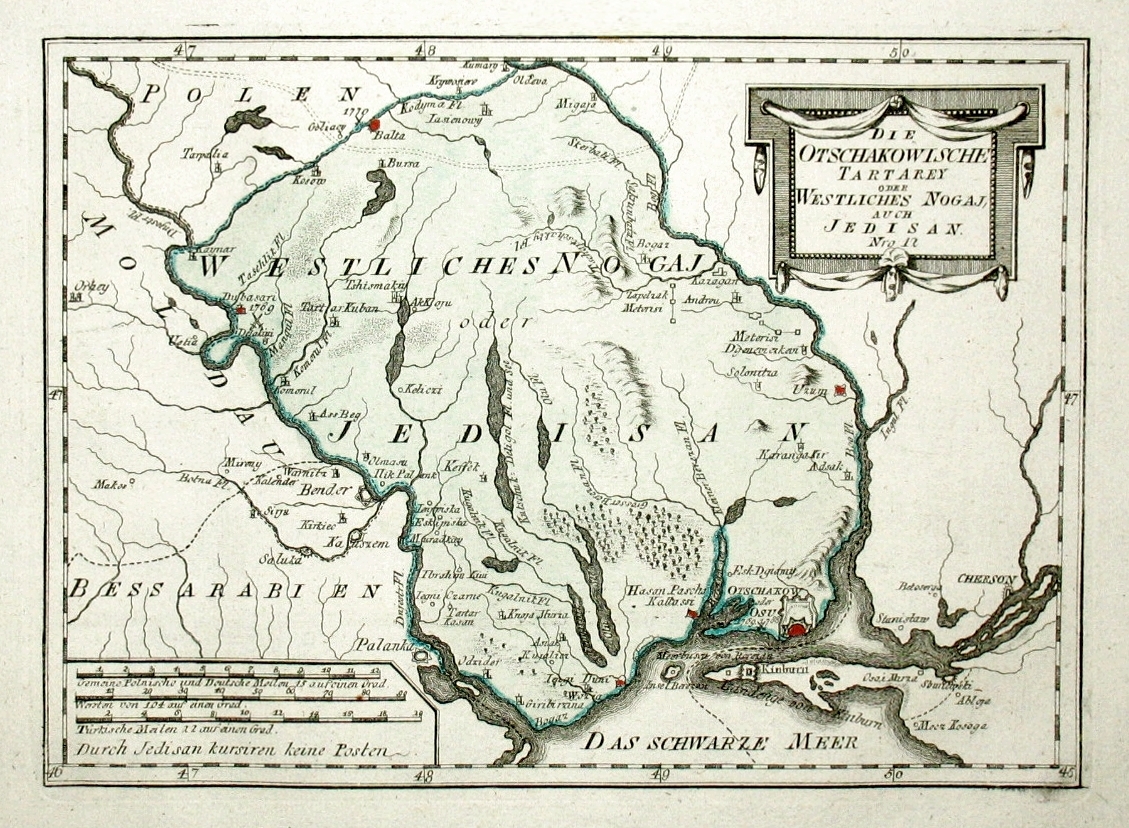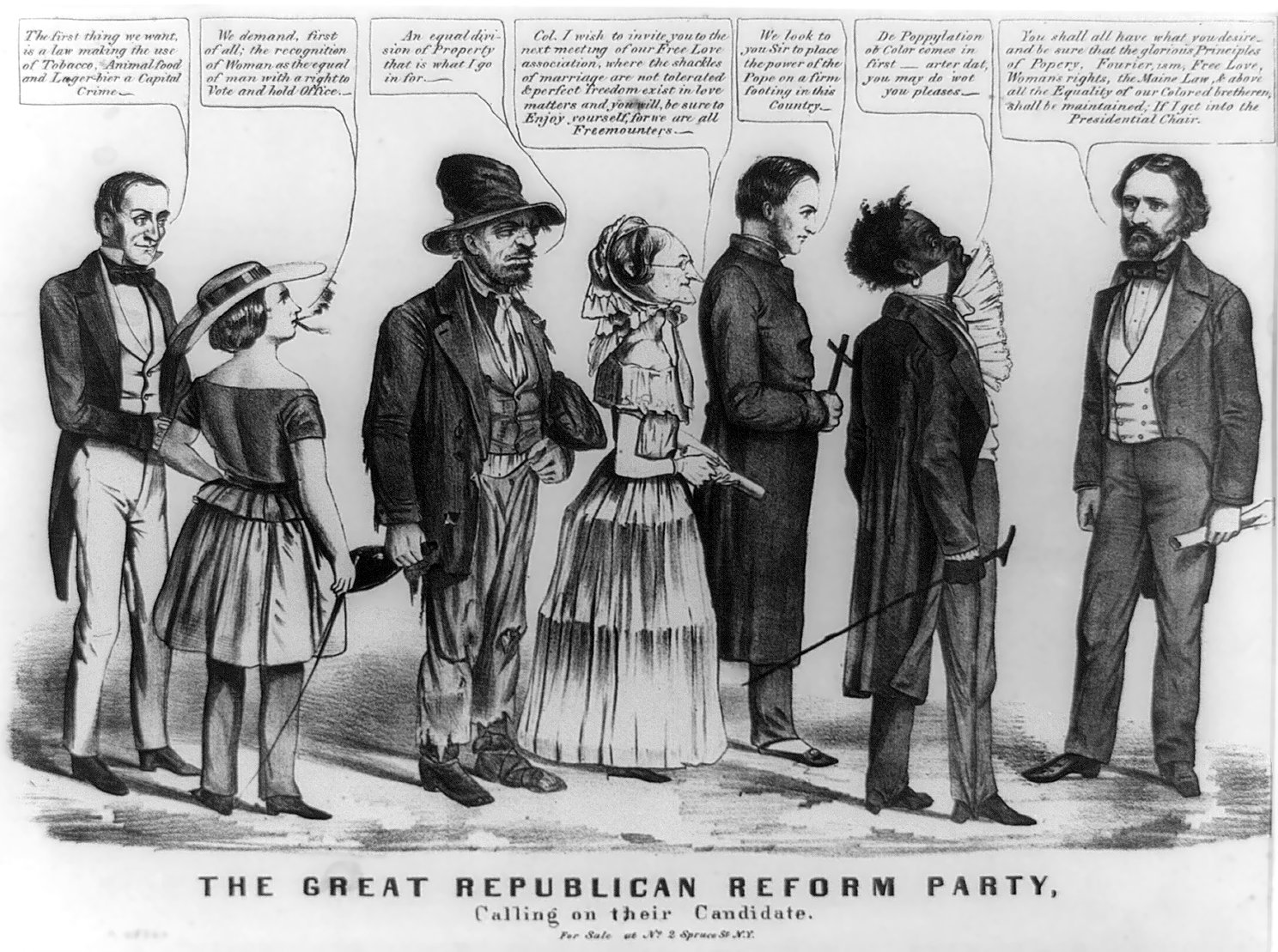|
Nathan Of Breslov
Nathan of Breslov (January 22, 1780 – December 20, 1844), also known as Reb Noson, born Nathan Sternhartz, was the chief disciple and scribe of Rebbe Nachman of Breslov, founder of the Breslov Hasidic dynasty. Reb Noson is credited with preserving, promoting and expanding the Breslov movement after the Rebbe's death. Rebbe Nachman himself said, "Were it not for Reb Noson, not a page of my writings would have remained." Spiritual seeker Reb Noson was born in the town of Nemyriv, Ukraine. His father, Rabbi Naphtali Hertz Sternhartz, was a Talmudic scholar of some distinction and a wealthy businessman. His mother's name was Chaya Laneh. Reb Noson was the firstborn of his family; he had three brothers — Reb Yudel, Reb Yosef, and Reb Leibush — and one sister, whose name is not known. Reb Noson received a traditional Torah education and learned his father's business. At the age of 13 (as was the custom), he married Esther Shaindel, daughter of Rabbi Dovid Zvi Orbach, the leading ... [...More Info...] [...Related Items...] OR: [Wikipedia] [Google] [Baidu] |
Ohel (grave)
Ohel ( he, אוהל; plural: , literally, "tent") is a structure built around a Jewish grave as a sign of prominence of the deceased. cover the graves of some (but not all) Hasidic Rebbes, important rabbis, tzadikim, prominent Jewish community leaders, and biblical figures. Typically a small masonry building, an may include room for visitors to pray, meditate, and light candles in honor of the deceased. Source According to Krajewska, the tradition of covering a grave with an may be based on the Cave of the Patriarchs, in which Abraham buried Sarah. Nolan Menachemson suggests that the Hasidic tradition of covering the graves of Rebbes with an derives from the ("Tent of Meeting") in which Moses communicated with God during the Israelites' travels in the desert. Construction are usually simple masonry structures. They may include one or two windows. In prewar Poland, the of a Rebbe was located close by the Hasidic court, and was big enough to accommodate a of ten men beside ... [...More Info...] [...Related Items...] OR: [Wikipedia] [Google] [Baidu] |
Yiddish
Yiddish (, or , ''yidish'' or ''idish'', , ; , ''Yidish-Taytsh'', ) is a West Germanic language historically spoken by Ashkenazi Jews. It originated during the 9th century in Central Europe, providing the nascent Ashkenazi community with a vernacular based on High German fused with many elements taken from Hebrew (notably Mishnaic) and to some extent Aramaic. Most varieties of Yiddish include elements of Slavic languages and the vocabulary contains traces of Romance languages.Aram Yardumian"A Tale of Two Hypotheses: Genetics and the Ethnogenesis of Ashkenazi Jewry".University of Pennsylvania. 2013. Yiddish is primarily written in the Hebrew alphabet. Prior to World War II, its worldwide peak was 11 million, with the number of speakers in the United States and Canada then totaling 150,000. Eighty-five percent of the approximately six million Jews who were murdered in the Holocaust were Yiddish speakers,Solomon Birnbaum, ''Grammatik der jiddischen Sprache'' (4., erg. Aufl., Hambu ... [...More Info...] [...Related Items...] OR: [Wikipedia] [Google] [Baidu] |
Midrash
''Midrash'' (;"midrash" ''Random House Webster's Unabridged Dictionary''. he, מִדְרָשׁ; or מִדְרָשׁוֹת ''midrashot'') is expansive using a rabbinic mode of interpretation prominent in the . The word itself means "textual interpretation", "study", or " |
Hebrew Bible
The Hebrew Bible or Tanakh (;"Tanach" ''Random House Webster's Unabridged Dictionary''. Hebrew: ''Tānāḵh''), also known in Hebrew as Miqra (; Hebrew: ''Mīqrā''), is the Biblical canon, canonical collection of Hebrew language, Hebrew scriptures, including the Torah, the Nevi'im, and the Ketuvim. Different branches of Judaism and Samaritanism have maintained different versions of the canon, including the 3rd-century Septuagint text used by Second-Temple Judaism, the Syriac language Peshitta, the Samaritan Torah, the Dead Sea Scrolls, and most recently the 10th century medieval Masoretic Text, Masoretic text created by the Masoretes currently used in modern Rabbinic Judaism. The terms "Hebrew Bible" or "Hebrew Canon" are frequently confused with the Masoretic text, however, this is a medieval version and one of several ... [...More Info...] [...Related Items...] OR: [Wikipedia] [Google] [Baidu] |
Southern Bug
, ''Pivdennyi Buh'' , name_etymology = , image = Sunset S Bug Vinnitsa 2007 G1.jpg , image_size = 270 , image_caption = Southern Bug River in the vicinity of Vinnytsia, Ukraine , map = PietinisBugas.png , map_size = 270px , map_caption = Southern Bug through Ukraine , pushpin_map = , pushpin_map_size = , pushpin_map_caption= , subdivision_type1 = Country , subdivision_name1 = Ukraine , subdivision_type2 = , subdivision_name2 = , subdivision_type3 = Oblast , subdivision_name3 = , subdivision_type4 = , subdivision_name4 = , subdivision_type5 = , subdivision_name5 = , length = , width_min = , width_avg = , width_max = , depth_min = , depth_avg = , depth_max = , discharge1_location= , discharge1_min = , discharge1_avg = 108 m3/s , discharge1_max = , source1 = , source1_location = ... [...More Info...] [...Related Items...] OR: [Wikipedia] [Google] [Baidu] |
Assimilation (sociology)
Cultural assimilation is the process in which a minority group or culture comes to resemble a society's majority group or assume the values, behaviors, and beliefs of another group whether fully or partially. The different types of cultural assimilation include full assimilation and forced assimilation; full assimilation being the most prevalent of the two, as it occurs spontaneously. During cultural assimilation, minority groups are expected to adapt to the everyday practices of the dominant culture through language and appearance as well as via more significant socioeconomic factors such as absorption into the local cultural and employment community. Some types of cultural assimilation resemble acculturation in which a minority group or culture completely assimilates into the dominant culture in which defining characteristics of the minority culture are less obverse or outright disappear; while in other types of cultural assimilation such as cultural integration mostly found ... [...More Info...] [...Related Items...] OR: [Wikipedia] [Google] [Baidu] |
Czar
Tsar ( or ), also spelled ''czar'', ''tzar'', or ''csar'', is a title used by East and South Slavic monarchs. The term is derived from the Latin word ''caesar'', which was intended to mean "emperor" in the European medieval sense of the term—a ruler with the same rank as a Roman emperor, holding it by the approval of another emperor or a supreme ecclesiastical official (the Pope or the Ecumenical Patriarch)—but was usually considered by western Europeans to be equivalent to "king". It lends its name to a system of government, tsarist autocracy or tsarism. "Tsar" and its variants were the official titles of the following states: * Bulgarian Empire (First Bulgarian Empire in 681–1018, Second Bulgarian Empire in 1185–1396), and also used in Tsardom of Bulgaria, in 1908–1946 * Serbian Empire, in 1346–1371 * Tsardom of Russia, in 1547–1721 (replaced in 1721 by ''imperator'' in Russian Empire, but still remaining in use, also officially in relation to several regi ... [...More Info...] [...Related Items...] OR: [Wikipedia] [Google] [Baidu] |
Smear Campaign
A smear campaign, also referred to as a smear tactic or simply a smear, is an effort to damage or call into question someone's reputation, by propounding negative propaganda. It makes use of discrediting tactics. It can be applied to individuals or groups. Common targets are public officials, politicians, political candidates, activists and ex-spouses. The term also applies in other contexts such as the workplace.Jay C. Thomas, Michel Hersen (2002) Handbook of Mental Health in the Workplace The term ''smear campaign'' became popular around 1936. Definition A smear campaign is an intentional, premeditated effort to undermine an individual's or group's reputation, credibility, and character. Like negative campaigning, most often smear campaigns target government officials, politicians, political candidates, and other public figures. However, private persons or groups may also become targets of smear campaigns perpetrated in companies, institutions, the legal system, and other ... [...More Info...] [...Related Items...] OR: [Wikipedia] [Google] [Baidu] |
Moshe Zvi Of Savran
Moshe Zvi Giterman of Savran (1775–1837) was the first Rebbe of Savran (Hasidic dynasty) and an influential Hasidic leader in western Ukraine, whose following numbered in the thousands. His father, Rabbi Shimon Shlomo (I), was the Maggid of Savran and a disciple of Dovber of Mezeritch, the primary disciple of the Baal Shem Tov, founder of Hasidic Judaism. Moshe Zvi was a disciple of his father, and also of Rabbi Levi Yitschok of Berditchev and Rabbi Boruch of Mezhbizh. After his father's death in 1802, Moshe Zvi took over his position as the Maggid of Savran. Moshe Zvi went on to become the Rabbi of Berditchev after the death of Rabbi Levi Yitzchok of Berditchev, and later became the Rabbi of the towns of Uman and Kishinev as well. He had thousands of chasidim in Volhynia and Bessarabia Bessarabia (; Gagauz: ''Besarabiya''; Romanian: ''Basarabia''; Ukrainian: ''Бессара́бія'') is a historical region in Eastern Europe, bounded by the Dniester river on th ... [...More Info...] [...Related Items...] OR: [Wikipedia] [Google] [Baidu] |
Synagogue
A synagogue, ', 'house of assembly', or ', "house of prayer"; Yiddish: ''shul'', Ladino: or ' (from synagogue); or ', "community". sometimes referred to as shul, and interchangeably used with the word temple, is a Jewish house of worship. Synagogues have a place for prayer (the main sanctuary and sometimes smaller chapels), where Jews attend religious Services or special ceremonies (including Weddings, Bar Mitzvahs or Bat Mitzvahs, Confirmations, choir performances, or even children's plays), have rooms for study, social hall(s), administrative and charitable offices, classrooms for religious school and Hebrew school, sometimes Jewish preschools, and often have many places to sit and congregate; display commemorative, historic, or modern artwork throughout; and sometimes have items of some Jewish historical significance or history about the Synagogue itself, on display. Synagogues are consecrated spaces used for the purpose of Jewish prayer, study, assembly, and r ... [...More Info...] [...Related Items...] OR: [Wikipedia] [Google] [Baidu] |
Rosh Hashana Kibbutz (Breslov)
The Rosh Hashana Kibbutz ( he, קיבוץ; plural: kibbutzim: קיבוצים, "gathering" or "ingathering") is a large prayer assemblage of Breslover Hasidim held on the Jewish New Year. It specifically refers to the pilgrimage of tens of thousands of Hasidim to the city of Uman, Ukraine,In first, Israel sets up temporary consulate in Uman for Rosh Hashanah (29 August 2018) (annually 40,000 Jews, nearly entirely men visit Uman) but also refers to sizable |
Uman, Ukraine
Uman ( uk, Умань, ; pl, Humań; yi, אומאַן) is a city located in Cherkasy Oblast in central Ukraine, to the east of Vinnytsia. Located in the historical region of the eastern Podolia, the city rests on the banks of the Umanka River at around . Uman serves as the administrative center of Uman Raion (district). It hosts the administration of Uman urban hromada, one of the hromadas of Ukraine. Population: Among Ukrainians, Uman is known for its depiction of the Haidamak rebellions in Taras Shevchenko's longest of poems, ''Haidamaky'' ("The Haidamaks", 1843). The city is also a pilgrimage site for Breslov Hasidic Jews and a major center of gardening research containing the dendrological park Sofiyivka and the University of Gardening. Uman (Humań) was a privately owned city of Poland and the Polish–Lithuanian Commonwealth. History Uman was first mentioned in historical documents in 1616, when it was under Polish rule. It was part of the Bracław Voivodeship of t ... [...More Info...] [...Related Items...] OR: [Wikipedia] [Google] [Baidu] |






.jpg)
